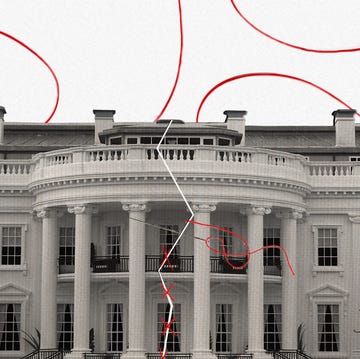My husband, a war-wounded Marine who served two tours in Iraq, was 25 years old when a nurse found his body lying face down in his hotel room. An amputee who suffered from PTSD, TBI, and an addiction to the opioids he had been prescribed for his war wounds, Cleve had been receiving treatment at an inpatient PTSD program in Houston, Texas. It had been four years since he was hit by an IED in Ramadi, Iraq and eight months since medically retiring from the military. His physical wounds had mostly healed by then, but his invisible ones had largely been ignored. He was depressed, angry, and on his worst days wondered whether it would’ve been better to die on the battlefield. Cleve had become desperate for help, so when his care coordinator at our local Veterans Affairs hospital offered inpatient care, he accepted. Less than two weeks after arriving, he died of a Fentanyl overdose.
I believe my husband’s death was preventable. Had the VA been properly equipped to care for severely war-wounded veterans like him, he might be alive today. The VA sent Cleve to a program that was supposedly inpatient, but it lacked funding for a facility with bedrooms– their solution was to keep high-risk patients across the street in a hotel. The program was so understaffed that they didn’t notice Cleve was missing until mid-morning, after he’d missed a therapy appointment. I still don’t know how long he’d been left without supervision, but I was told he’d been dead approximately twelve hours before his body was found just after 11am.
The truth is, Veterans Affairs has never quite lived up to Americans’ expectations for caring for our country’s heroes. You would think that as a nation that has been almost continuously in conflict throughout its history, we’d take great care of the citizens willing to volunteer for military service while the rest of us remain comfortable in our homes. But in my experience, the VA–while well-intentioned–often falls short of adequately caring for the mental, physical, and emotional health of the men and women who sacrifice their lives for our freedom. Not only do many veterans struggle to understand the benefits available to them at all, but the hospitals are often outdated. There are months-long waits for essential care, and lines at the hospital can be unreasonably long. And that’s for veterans lucky enough to have access to a VA hospital at all. A quarter of our veterans live in rural areas with no VA hospital nearby. Despite all of this, however, VA hospitals are still considered competitive to non-VA hospitals, according to patient surveys. And 9.1 million veterans depend on VA hospitals for care. Inadequate as the VA may be, without its services many more veterans would be left to suffer and/or die.
I fear that with DOGE’s recent buyout and mass layoffs, even more veterans will share my husband’s fate. In the past month, 2400 VA employees have been laid off, including VA crisis line employees and researchers working on life-changing prosthetics and critical opioid addiction treatments. These are the kinds of experts who could have helped save my husband’s life. What’s worse–The Department of Veterans Affairs plans to lay off 83,000 more employees by the end of 2025. And those numbers don’t include the yet unknown number of VA employees who accepted the callously handled buyout, which was originally offered to frontline VA health workers before DOGE made them ineligible days later. It’s also worth mentioning that 30% of all federal employees are veterans. At the same time VA crisis hotline employees were being fired by Musk’s DOGE, 6,000 military veterans were laid off across federal agencies—a callous act at the surface level, but even more so when you consider the relationship between unemployment and suicide and the fact that veterans are 72% more likely to commit suicide than the rest of the population. Is this really how the United States of America treats its veterans now?
Cleve and I met in grade school. We shared our first kiss behind the bleachers of our middle school’s football field, and after he was hit by a bomb eight years later, I cared for his wounds. We loved each other very much. But by the time the VA sent him to inpatient PTSD therapy, the PTSD had turned him abusive–verbally and, a few times, physically. Our marriage was on the brink, and he was desperate for help. We trusted the VA to help us. Had I known it was at the risk of his life, I wouldn’t have let him go.
My grandfather was a seaman. My father was a soldier. My husband was a Marine. Now, I’m a military widow. Generation after generation, families like mine have carried the burden of our nation’s many sins on their backs, allowing the rest of Americans the luxury of pretending they aren’t complicit in them. Sometimes, that makes me feel pride. After all, someone has to do it, and volunteering for such a thing is, if nothing else, pretty brave. But other times, it makes me feel sad or angry, even ashamed. Nobody wants to walk around knowing they’ve got blood on their hands, and everyone can see it.
Growing up, I was taught that, no matter their political affiliation, Americans should respect and support the troops because they volunteered to do this country’s dirty work so the rest of us don’t have to. I was taught that the least our government can do to repay them is take care of them and their families after they’ve served. What Trump and Musk’s DOGE is doing to our veterans is shameful. It’s un-American. It’s also a litmus test. If this administration is willing to openly treat our nation’s heroes with such ruthless abandon, what can we expect for the rest of us?















